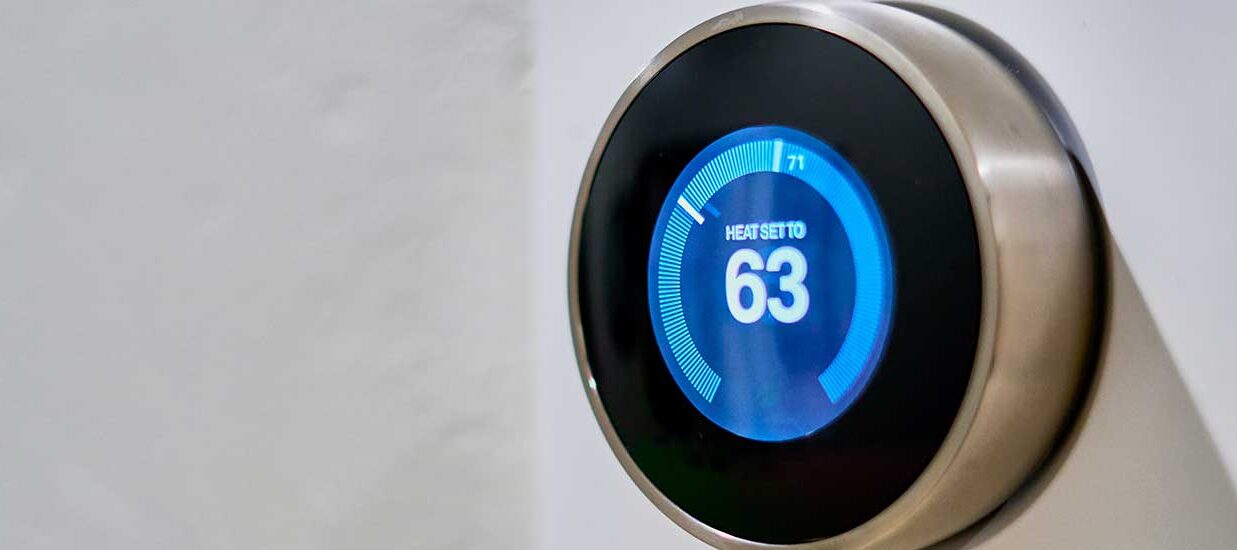Optimizing Commercial Building Energy Control with Building Automation Systems
What Is Building Automation?
A Building Automation System (BAS) is a connected network of computers, servers, sensors, actuators, and controllers that help to ensure energy efficiency within a building while prioritizing comfort, sustainability, and reducing operational costs.
Since various aspects of building automation have become standard in more and more spaces every year, it’s easy to interact with these systems without even noticing them.
Every day, small-scale examples of building automation include thermostats, motion-activated lights, automatic water faucets, and scheduled security system alarms.
The more commercial side of these systems involves large-scale networks for schools, factories, event spaces, churches, office spaces, and many other building types.
Some buildings with more integrated and advanced BAS are often referred to as “intelligent buildings” or “green buildings” due to how tightly run their systems strive to minimize energy waste and simultaneously increase energy-efficiency savings.
What Sort of Controls Does a BAS Oversee?
A typical BAS’s primary focus is to help optimize energy controls to reduce operating costs while increasing overall sustainability.
The most commonly optimized energy controls within Building Automation Systems include HVAC and ventilation, both of which fall within the category of space heating, and it’s clear to see why this is the case.
In a 2018 Survey conducted by EIA (the U.S. Energy Information Administration), space heating alone made up 32% of the major fuels consumption amongst commercial buildings within the U.S.
In addition to curating more optimized space heating solutions, a BAS can also oversee:
- Lighting Controls
- Security Systems
- Fire & Flood Alarms
- Carbon Monoxide Detectors
- Card Access Keypads
- Device Failure Monitoring
Newer intelligent technologies such as security cameras, smart speakers, smart thermostats, and even self-operated vacuums and lawn care equipment will soon become integrated into these automated systems.
How Building Automation and Energy Management Systems Work
Building Automation Systems work by centralizing as many active control components of a building as possible to help reduce energy and maintenance costs compared to buildings without such systems.
Integrating multiple systems into one cohesive interconnected network allows for more efficient customization without having to adjust every asset anytime individually there are replacements or extensive updates.
Most buildings constructed after the year 2000 typically have a BAS installed as energy-saving standards have become more prioritized with time. For older buildings that may not have a BAS in place, the EPCO team of professionals is available to help guide these sizable structures through the upgrading process, thanks to our robust network of industry experts and partnerships.
For BAS and Beyond, EPCO Is Here To Help
There’s a need to continuously improve the energy efficiency of commercial buildings within the U.S. But thankfully, once adequate energy management solutions, such as a Building Automation System, become implemented, the path to sustainability becomes possible.
According to energy.gov, it’s estimated that by 2030, current cost-effective technologies, including Building Automation Systems, could reduce building energy use by over 20%!
Achievable research projections push these savings to over 35% in some scenarios, showcasing significant opportunities for commercial buildings that have yet to realize their true energy-efficiency capabilities fully.
Although a BAS is one solution for older commercial buildings looking to decrease costs while increasing energy-efficiency, a variety of equally viable and complementary energy management solutions also need to be considered.
Fortunately, EPCO’s industry-leading expertise in finding the best commercial energy incentives on the market can help to reduce the initial implementation costs of installing and integrating a new BAS across your various energy controls.
And EPCO’s energy-efficiency implementation services can help make even the most daunting commercial-grade sustainability goals more attainable than ever before.

